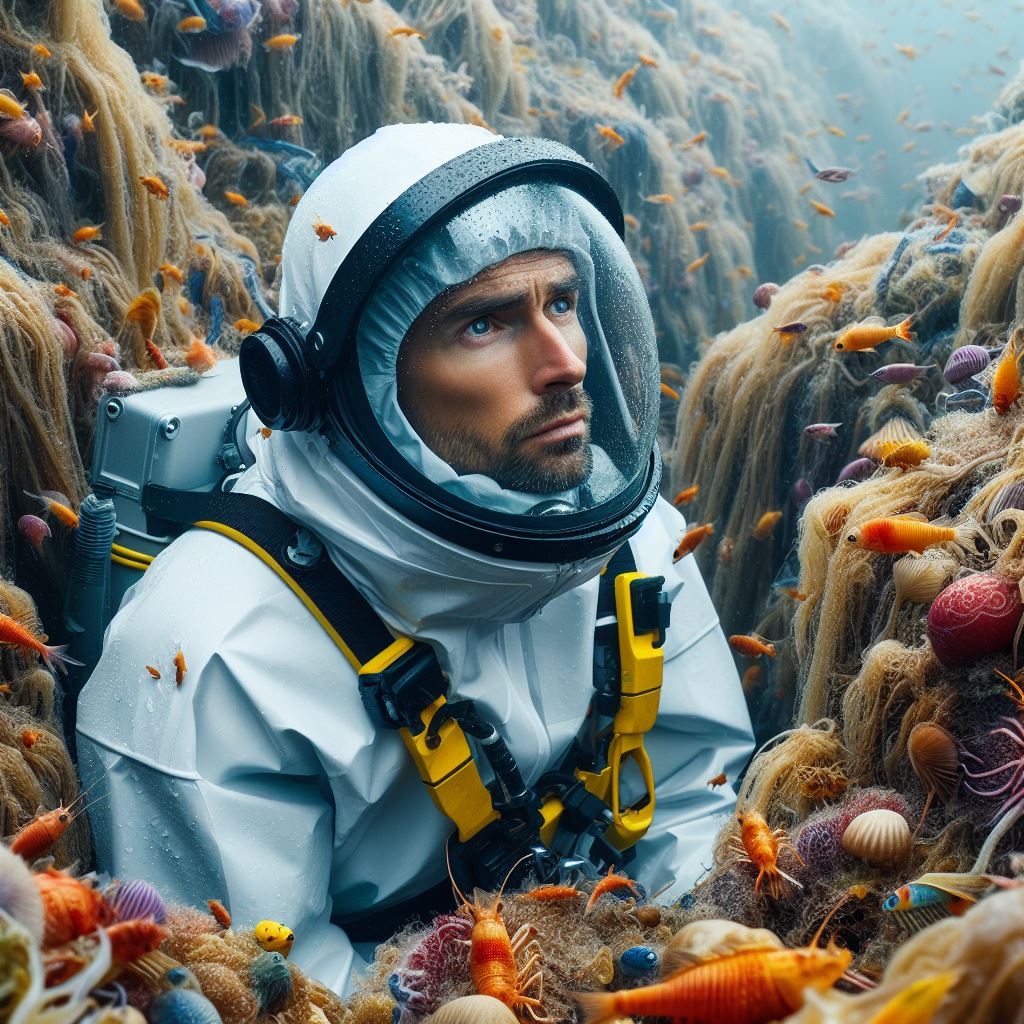Introduction
The New Zealand seas teem with life. Exploring marine biology hotspots is crucial. This blog uncovers their significance.
Marine biology in NZ is rich. Understanding these ecosystems is vital. This post aims to delve into their importance.
Exploring NZ’s marine hotspots reveals diversity. Studying them aids conservation efforts. Let’s delve into this fascinating subject.
The ocean around NZ holds secrets. Marine biology hotspots harbor unique species. This post explores their significance in detail.
Unlocking the mysteries of NZ seas is vital. Marine biology hotspots offer insight. This blog chapter delves into their importance.
NZ’s marine ecosystems are diverse and fragile. Investigating hotspots aids preservation efforts. This post delves into their significance.
Understanding marine hotspots benefits conservation. NZ’s seas are brimming with life. Let’s delve into their importance in this blog.
The exploration of marine hotspots is crucial. NZ’s seas are biodiverse. This post highlights their significance in marine biology.
Marine biology hotspots in NZ are vital. They’re hubs of biodiversity. This blog chapter explores their importance in detail.
Exploring marine hotspots aids conservation. NZ’s seas are rich ecosystems. This post delves into why they’re worth studying.
Overview of NZ Seas
The seas surrounding New Zealand are home to a wide array of marine life.
These waters boast a remarkable diversity of species, making them a hot spot for marine biologists.
New Zealand’s seas are of great significance in the global marine biodiversity landscape.
Diversity of Marine Life
The marine ecosystems around New Zealand are incredibly diverse.
From vibrant coral reefs to deep-sea trenches, these waters offer a variety of habitats.
Personalized Career Consulting
Unlock your potential with expert career advice tailored to your goals. Get personalized guidance and actionable steps toward your dream career in New Zealand.
Get StartedOver 16,000 species have been identified in New Zealand’s seas, with many more yet to be discovered.
These include unique and endemic species found nowhere else in the world.
Seals, dolphins, whales, penguins, and a myriad of fish species thrive in these rich waters.
New Zealand’s seas also support vital breeding grounds for numerous migratory species.
The diverse marine life in these waters attracts researchers, environmentalists, and nature enthusiasts from around the globe.
Significance in Global Marine Biodiversity
New Zealand’s seas play a crucial role in the global marine biodiversity context.
These waters are part of the “Coral Triangle,” one of the world’s most biodiverse regions.
The unique combination of warm and cool currents creates ideal conditions for marine life to flourish.
New Zealand’s seas are a meeting point for species from the Pacific, Southern Ocean, and Tasman Sea.
This convergence results in a remarkable mix of species and genetic diversity.
Many rare and threatened species seek refuge in these pristine waters.
The conservation efforts to protect New Zealand’s marine biodiversity contribute to the global conservation agenda.
Conservation Challenges and Opportunities
Despite their ecological importance, New Zealand’s seas face various conservation challenges.
Overfishing, pollution, habitat destruction, and climate change impact the delicate marine ecosystems.
Transform Your Career with a Professional CV and Cover Letter
Stand out to employers with an ATS-optimized resume and tailored cover letter designed to match your dream role. Let us craft your job application materials for success!
Get StartedThe introduction of invasive species also poses a threat to native marine organisms.
However, there are opportunities for conservation and sustainable management.
The New Zealand government has implemented marine protected areas and fishing restrictions to safeguard biodiversity.
Scientific research and monitoring programs help identify the most vulnerable areas and species.
Collaborative efforts between government, researchers, and local communities are vital for conservation success.
Eco-tourism initiatives promote awareness and generate economic benefits, creating incentives for marine protection.
New Zealand’s seas are a treasure trove of marine biodiversity, attracting scientists and nature enthusiasts alike.
With their extraordinary variety of species and global significance, these waters deserve our utmost protection.
By addressing conservation challenges and embracing sustainable practices, we can ensure the long-term health of New Zealand’s marine ecosystems.
Read: Day in a Life: Marine Biologist in NZ
What are Marine Biology Hotspots?
Definition of marine biology hotspots
Marine biology hotspots, integral to understanding ocean ecosystems, represent areas teeming with diverse marine life.
These regions boast an exceptional concentration of species, from microscopic plankton to large marine mammals.
Their significance lies in their role as hubs of biodiversity, providing crucial habitats and resources for countless marine organisms.
How these areas are identified and classified
Identifying marine biology hotspots involves meticulous research methodologies and advanced technologies.
Boost Your Career with a Standout LinkedIn Profile
Attract recruiters and expand your network with a fully optimized LinkedIn profile tailored to highlight your strengths and professional goals. Let your profile open doors to new opportunities!
Get OptimizedScientists employ various techniques such as satellite imagery, underwater surveys, and genetic analysis to pinpoint these areas.
Through comprehensive data collection and analysis, researchers map out the distribution patterns of species and ecosystems, revealing the spatial extent and boundaries of hotspots.
Factors that contribute to the formation of hotspots
The formation of marine biology hotspots is influenced by a myriad of interconnected factors.
Oceanographic features like currents, upwelling zones, and bathymetry play pivotal roles in shaping these areas.
Nutrient availability, driven by factors like coastal runoff and ocean circulation patterns, fuels the productivity of marine ecosystems within hotspots.
Additionally, climatic conditions such as temperature fluctuations and seasonal variations contribute to the dynamic nature of these regions.
Overall, the intricate interplay of biological, physical, and environmental factors fosters the development and sustenance of marine biology hotspots.
Understanding the mechanisms driving their formation is essential for effective conservation and management strategies.
By identifying and safeguarding these critical areas, we can preserve biodiversity, support ecosystem resilience, and ensure the long-term health of our oceans.
Read: NZ Marine Biologists: Who Are They Really?

NZ’s Marine Biology Hotspots
New Zealand is known worldwide for its stunning natural beauty, and its marine biology hotspots are no exception.
In this blog section, we will introduce some of the well-known marine biology hotspots in NZ, including the Hauraki Gulf, Fiordland, and the Poor Knights Islands, and briefly describe their unique characteristics and biodiversity.
The Hauraki Gulf
The Hauraki Gulf is located on the eastern coast of the North Island and is a true gem in New Zealand’s marine ecosystem.
It is home to over 50 islands and is known for its rich biodiversity.
The Gulf’s unique characteristics include its distinctive mixture of warm and cold waters, creating a diverse range of habitats for marine species.
Its sheltered waters and rocky reefs provide a perfect environment for a variety of fish, including snapper, grouper, and numerous species of rays.
Furthermore, the Gulf is home to the critically endangered Bryde’s whale, as well as dolphins, seals, and numerous bird species.
Its incredible biodiversity and its role as a nursery for many marine creatures make it a vital and fascinating hotspot.
Fiordland
Fiordland, located in the southwest corner of the South Island, is a breathtaking marine paradise with some of the world’s most dramatic landscapes.
Its fjords, carved by glaciers, create a unique and awe-inspiring environment.
The underwater world of Fiordland is as spectacular as its surface. Its deep and cold waters support an incredible array of marine life.
The area is home to black coral trees, which can reach impressive sizes, and rare species such as the Fiordland crested penguin.
Fiordland’s remoteness and pristine conditions make it an exceptional hotspot for divers and marine biologists alike.
Its unique ecosystem and the presence of ancient species make it a haven for research and discovery.
The Poor Knights Islands
Located off the northeastern coast of NZ’s North Island, the Poor Knights Islands are another incredible marine hotspot.
The islands are a protected marine reserve, teeming with biodiversity.
What makes the Poor Knights Islands unique is their underwater topography.
The islands are actually the eroded remnants of ancient volcanoes, creating a rugged and intricate maze of caves, tunnels, and arches.
These formations provide diverse habitats for an abundance of marine species.
The Poor Knights Islands are home to an astonishing variety of fish, including the colorful maomao, snapper, and the vibrant jewel anemones.
They also serve as a breeding ground for seabirds, such as the grey-faced petrel, making them an important hotspot for avian enthusiasts as well.
New Zealand’s marine biology hotspots are truly remarkable.
The Hauraki Gulf, Fiordland, and the Poor Knights Islands each offer unique characteristics and a vast array of biodiversity.
Exploring these hotspots provides a deeper understanding of the complex and fragile marine ecosystems that make NZ a global treasure.
Whether you’re an avid diver, a passionate biologist, or simply someone who appreciates the wonders of nature, these marine biology hotspots in New Zealand are not to be missed.
Read: NZ Eco Scientists & Global Impact
Research and Discoveries in NZ Hotspots
The marine ecosystems surrounding New Zealand are teeming with life and have become a hub for scientific research and discoveries.
Numerous initiatives have been undertaken to study these hotspots, unveiling important findings that shed light on the intricacies of marine biology.
Let’s explore some of the research projects conducted in NZ hotspots and the significance of their discoveries.
1. Hauraki Gulf Marine Park
A research initiative led by the University of Auckland focused on studying the declining population of Bryde’s whales in the Hauraki Gulf Marine Park.
Using innovative acoustic techniques, scientists discovered that noise pollution from vessel traffic was disrupting the whales’ feeding and communication patterns.
This finding prompted the implementation of measures to reduce ship noise and protect the habitat of these endangered marine mammals.
2. Poor Knights Islands Marine Reserve
Researchers from Massey University conducted a study in the Poor Knights Islands Marine Reserve to investigate the impact of climate change on marine biodiversity.
They found that species diversity had increased significantly within the reserve due to warmer waters attracting a wider range of organisms.
This research highlighted the importance of marine protected areas in mitigating the effects of climate change on vulnerable ecosystems.
3. Kaikōura Canyon
A collaborative research project between the Department of Conservation and NIWA focused on studying the unique biodiversity of the Kaikōura Canyon.
By utilizing underwater robotic technology, scientists discovered new species of deep-sea corals and sponges, some of which were previously unknown to science.
These findings emphasized the need for marine conservation efforts to protect these newly discovered species and their fragile habitats.
4. Fiordland Marine Area
Scientists from the University of Otago conducted research in the Fiordland Marine Area to investigate the role of deep-sea canyons in carbon sequestration.
They found that these canyons acted as important sinks for carbon, helping to mitigate the effects of climate change by storing large amounts of carbon dioxide.
This discovery highlighted the ecological significance of these underwater canyons and emphasized the need to protect them from human activities.
5. Bay of Plenty
A recent research project by the Bay of Plenty Coastal Marine Group focused on studying the impact of microplastics on marine life in the Bay of Plenty.
The study revealed that microplastics were present in high concentrations and were being ingested by various marine organisms, posing a threat to the ecosystem.
These findings prompted the implementation of stricter regulations on plastic waste disposal and increased public awareness about the issue.
These examples illustrate just a fraction of the research initiatives and discoveries made in NZ hotspots.
From understanding the effects of climate change on biodiversity to unveiling new species in unexplored areas, these studies have immensely contributed to our knowledge of marine biology and conservation.
Continued research in these hotspots is crucial for developing effective strategies to protect and preserve New Zealand’s unique marine ecosystems.
Read: Graduate Paths in NZ Eco Science
Conservation Efforts in NZ Seas
The need for conservation efforts in NZ seas
Conservation efforts in New Zealand’s seas are imperative due to the unparalleled biodiversity and ecological significance of these marine environments.
The diverse array of marine life, including endemic species found nowhere else on Earth, underscores the urgency of protecting these fragile ecosystems.
Without concerted conservation actions, the delicate balance of marine ecosystems is at risk of irreparable damage, threatening not only the biodiversity but also the livelihoods and well-being of coastal communities.
Threats and challenges faced by marine life in these hotspots
Marine life in New Zealand’s seas faces an array of formidable threats and challenges.
Pollution from various sources, including agricultural runoff, industrial waste, and plastic pollution, poses a significant danger to marine species.
Overfishing depletes fish stocks and disrupts entire food webs, while habitat destruction, such as coastal development and dredging, further exacerbates the loss of critical habitats.
Climate change compounds these issues, causing ocean acidification, rising sea temperatures, and more frequent extreme weather events, all of which impact marine ecosystems and their inhabitants.
Conservation initiatives and organizations working towards protecting these areas
Despite the daunting challenges, numerous conservation initiatives and organizations are actively engaged in protecting New Zealand’s marine environments.
Marine reserves and protected areas have been established to safeguard key habitats and species, providing refuges where marine life can thrive.
Education and awareness campaigns raise public consciousness about the importance of marine conservation, fostering a sense of stewardship among communities.
Research and monitoring programs contribute vital data to inform conservation efforts, while collaboration between government agencies, research institutions, and non-profit organizations strengthens the effectiveness of conservation initiatives.
Community involvement plays a crucial role, empowering local communities to become champions for marine conservation and ensuring the sustainability of ongoing efforts.
Through these collective endeavors, there is hope for the preservation and restoration of New Zealand’s seas, safeguarding their biodiversity for future generations.
Conclusion
Studying marine biology hotspots in NZ seas is of utmost importance.
It allows us to understand the delicate ecosystems and the impact of human activities on marine life.
By exploring and appreciating the richness of these hotspots, we can contribute to their preservation and conservation.
Let us dive beneath the surface and immerse ourselves in the awe-inspiring marine world.
From the vibrant reefs to the diverse species that inhabit these hotspots, there is so much to discover and protect.
So, grab your snorkel mask or scuba gear and start exploring the hidden treasures that lie beneath the waves.
As we continue to study and unravel the mysteries of marine biology hotspots, let us not forget our responsibility as caretakers of the ocean.
By raising awareness and taking actions to reduce pollution and overfishing, we can ensure the longevity and beauty of these ecosystems for generations to come.
So, whether you live near the coast or are planning a trip to New Zealand, take the time to appreciate and explore the marine life in these hotspots.
Venture out on a boat tour, go for a swim, or simply sit on the shore and observe the wonders of the ocean.
In the words of Rachel Carson, “The more clearly we can focus our attention on the wonders and realities of the universe about us, the less taste we shall have for destruction.”
Let us cherish and protect the marine biology hotspots in NZ seas for a sustainable and thriving future.
The ocean beckons us, and it’s time to answer the call.




